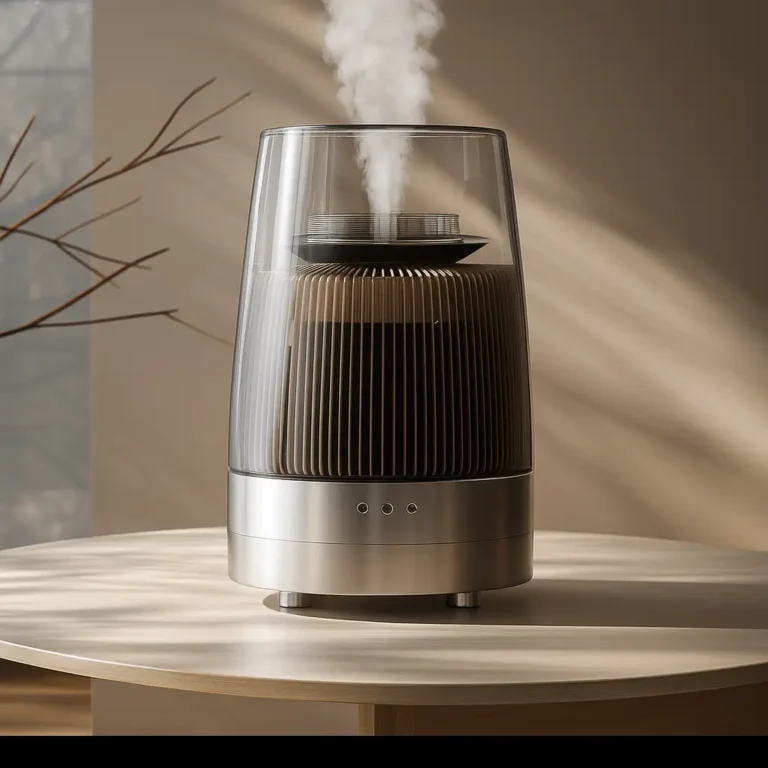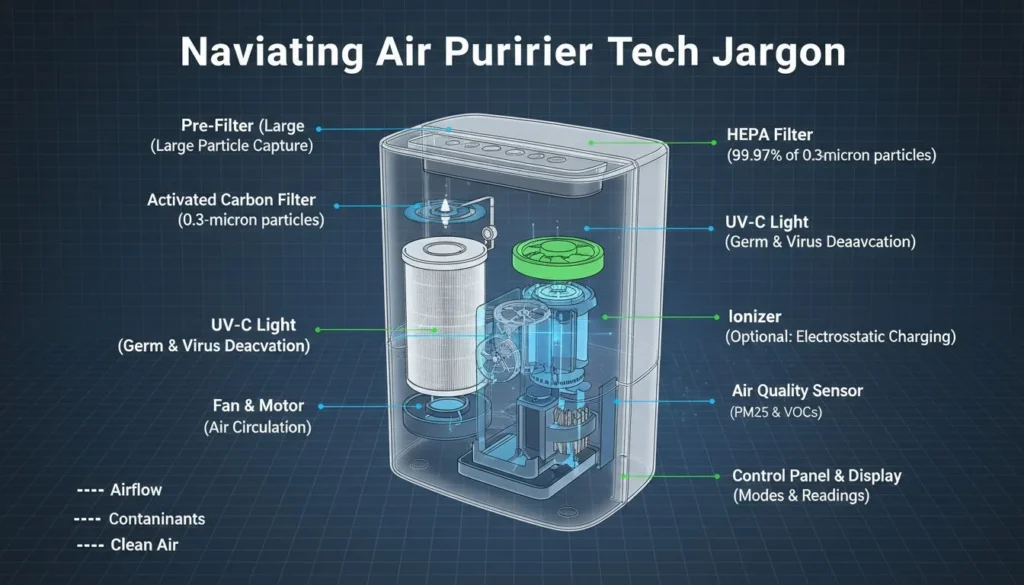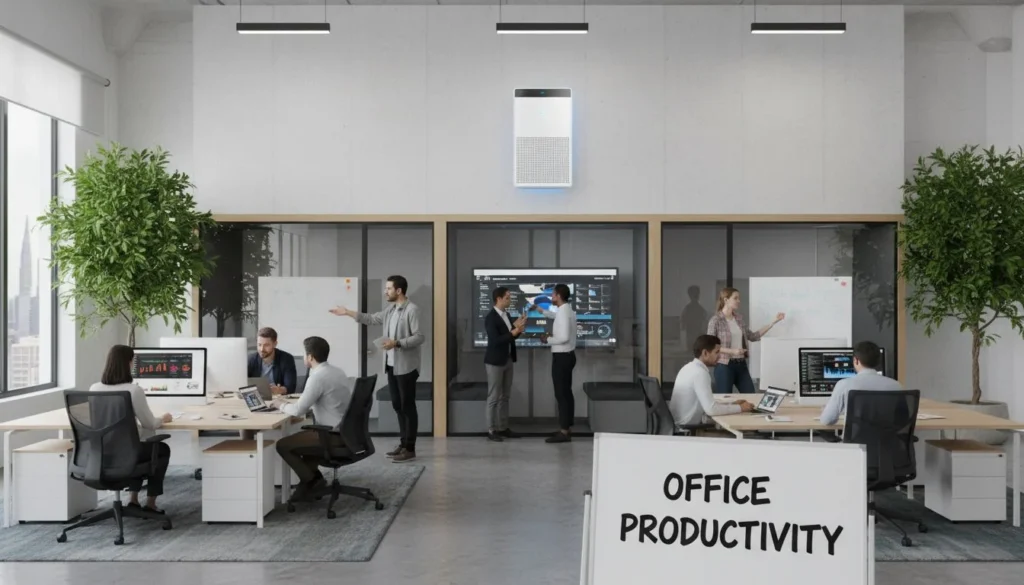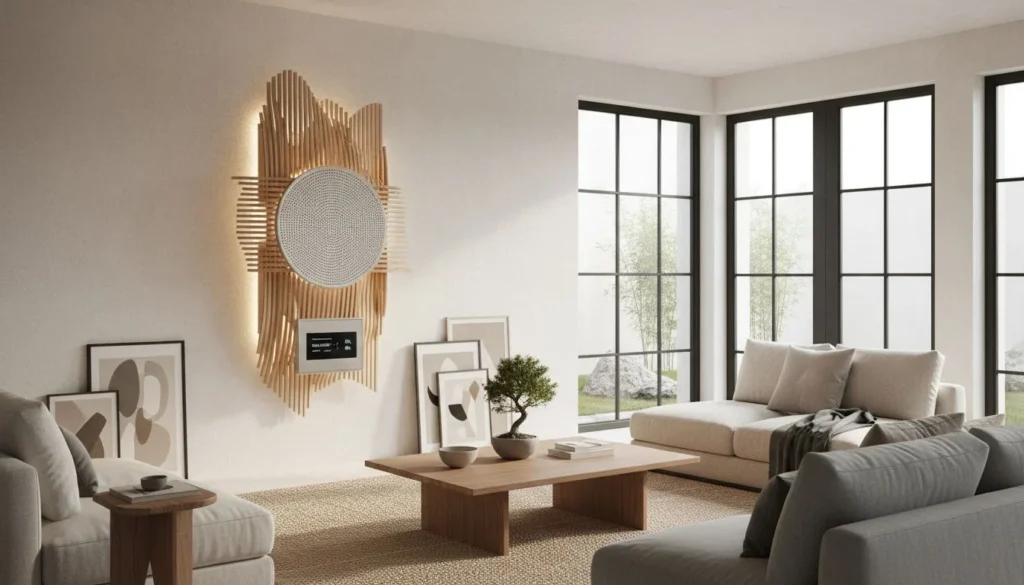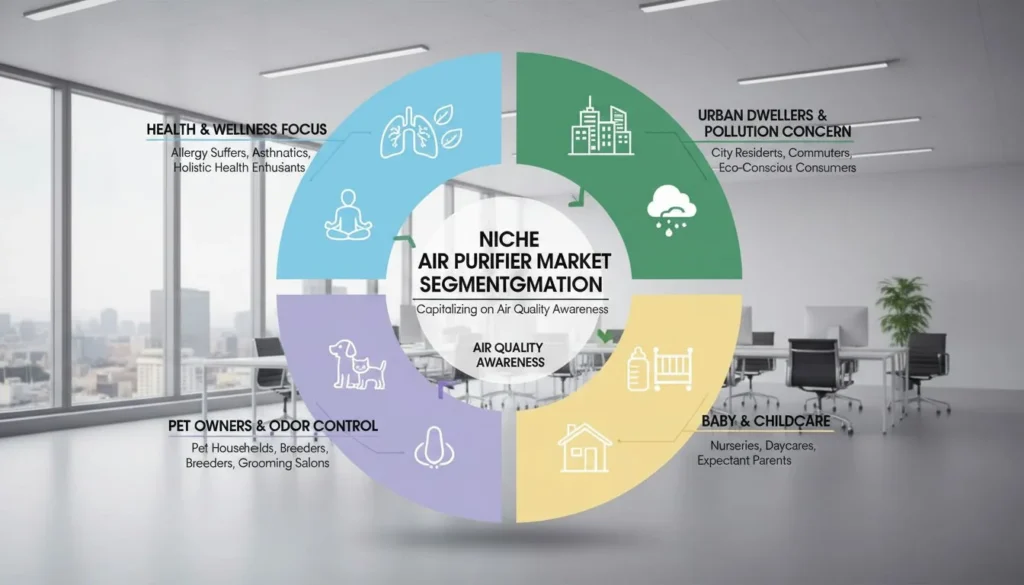
Your customers are tired of that gross "Pink slime1" in their humidifiers. This constant, disgusting cleaning problem leads to bad reviews and returns. A better material is the only real solution.
Stainless steel2 is the future because it is non-porous, hygienic, and durable. It solves the core problems of plastic humidifiers, like mold and "pink slime," leading to a safer product, happier customers, and a stronger brand that can command a premium price.
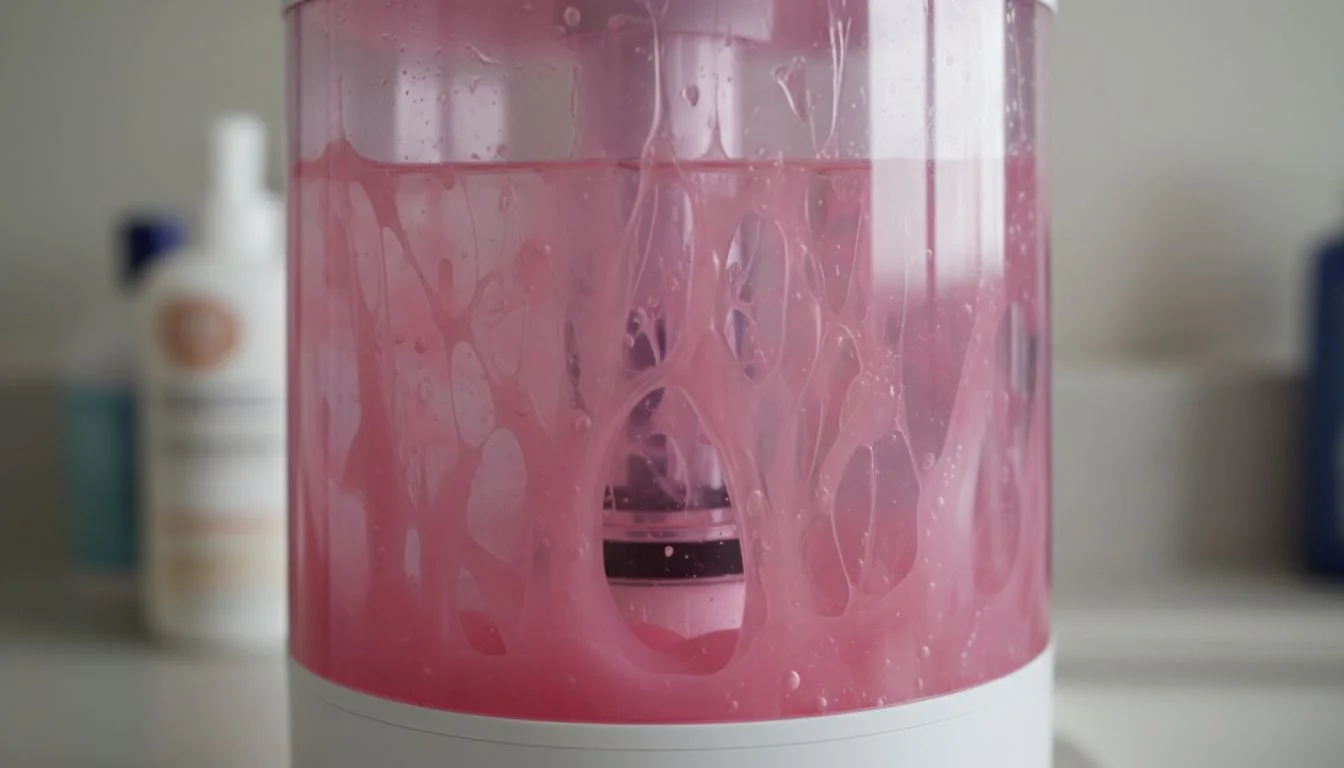
I've been in the mold and manufacturing business for a long time. I've seen countless great product ideas fail because of one simple mistake: the wrong Material choice3. A beautiful design means nothing if the material itself is flawed. For wellness products like humidifiers, this is even more critical.
The market is full of plastic humidifiers that look good on the shelf but quickly become a problem in the home. As a product designer or brand owner, you need to understand why this happens and how to build something better. Let's break down why stainless steel is the game-changer your brand needs to lead the market, not just follow it.
The 'pink slime' often found in humidifiers is a bacteria called Serratia marcescens.True
Serratia marcescens is a common airborne and waterborne bacterium that thrives in damp conditions and feeds on minerals and fatty deposits, making plastic humidifiers an ideal breeding ground.
All plastics, including BPA-free ones, are porous on a microscopic level.True
Plastic surfaces contain microscopic pores and can develop micro-scratches from cleaning. These imperfections trap water and bacteria, allowing biofilm (like pink slime) to form and become very difficult to remove completely.
1. The "Pink Slime" Problem: Why Do 99% of Humidifiers Fail?
Your customers complain about slimy, smelly humidifiers. This leads to terrible reviews and costly returns, damaging your brand's reputation. You must address the root cause: the material itself.
Most humidifiers fail because their plastic construction is porous. This creates a perfect breeding ground for bacteria and "pink slime," no matter how often users clean them. It is a fundamental design flaw that cannot be fixed with clever features.
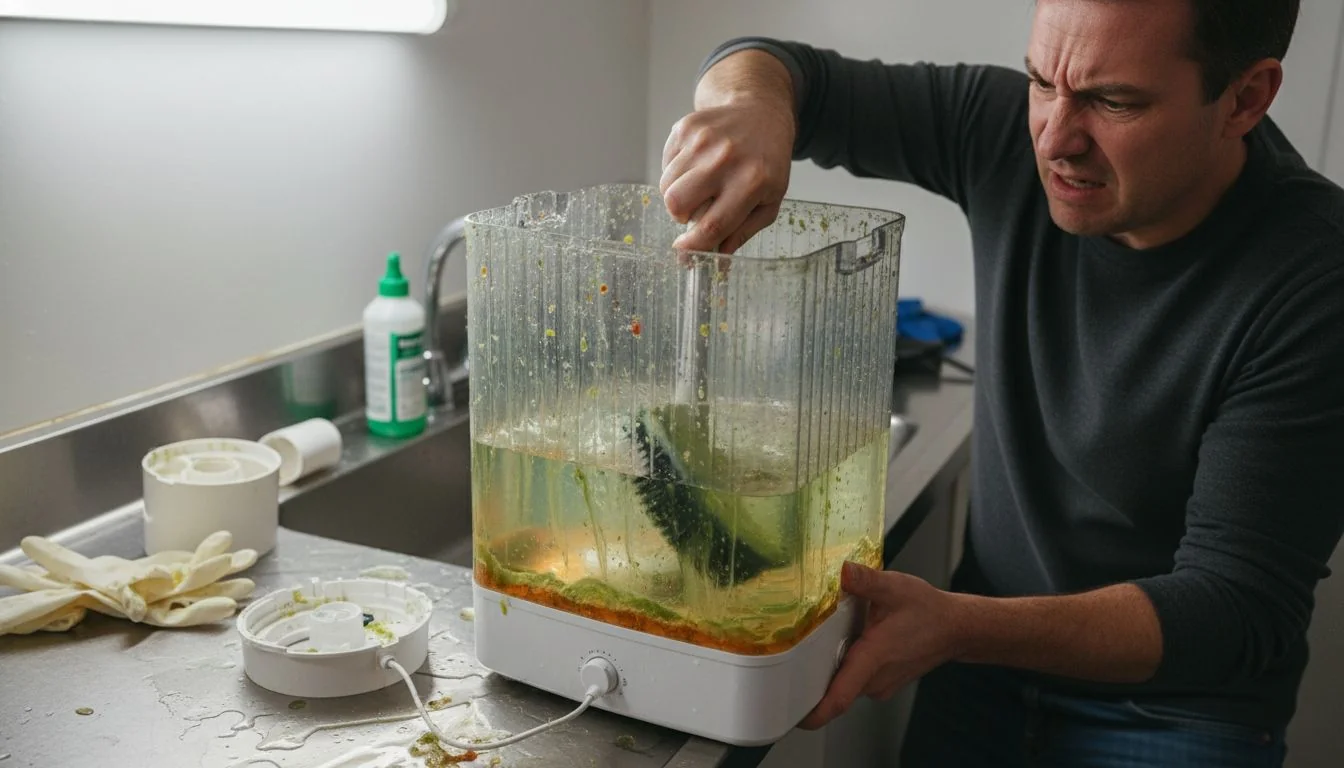
In my years of helping clients bring products to market, I saw a pattern. A client would launch a beautifully designed humidifier. The marketing was great. But six months later, their customer support was overwhelmed. The reviews were full of complaints about "that gross pink stuff" or a "musty smell." The product failed. The enemy here is "Pink Slime," or more accurately, a bacteria called Serratia marcescens. It thrives in the damp, porous environment of a typical plastic humidifier tank.
Why Plastic Is the Problem
Plastic seems like a good choice. It's cheap and easy to mold. But for a device that holds water, it's a disaster waiting to happen.
- Porous Surface: All plastics, even high-quality, BPA-free ones, are porous. Think of it like a sponge on a microscopic level. These tiny holes trap water and become a home for bacteria.
- Micro-Scratches: Every time a customer scrubs their plastic tank, they create tiny new scratches. These scratches make the problem even worse, creating more places for biofilm to grow.
You can't design your way out of a bad material. The failure is built into the plastic itself.
| 기능 | Standard Plastic (ABS/PP) | Stainless Steel (304/316) |
|---|---|---|
| Surface Porosity | High (Microscopic pores) | Extremely Low (Non-porous) |
| Bacteria resistance4 | Poor | 우수 |
| Cleaning Difficulty | High (Biofilm hides in pores) | Easy (Smooth surface) |
| 내구성5 | Low (Scratches easily) | High (Resists scratches) |
Weekly cleaning can completely prevent bacterial growth in plastic humidifiers.False
While weekly cleaning helps, the porous nature of plastic and the formation of micro-scratches make it nearly impossible to remove all biofilm. Bacteria can persist and regrow quickly.
Stainless steel is naturally resistant to corrosion and rust, making it ideal for holding water.True
Grades like 304 and 316 stainless steel contain chromium, which forms a passive, non-reactive layer on the surface, preventing rust and corrosion when exposed to water and air.
2. "Safe" — The Hygiene Revolution of Stainless Steel?
You tell your customers your product is "BPA-Free," but they still worry. They are concerned about what is actually in the mist they breathe. You need to redefine safety as true hygiene.
Stainless steel provides a Hygiene revolution6 because it is non-porous. Unlike plastic, it naturally resists bacterial growth and does not degrade or leach chemicals over time. This means a cleaner mist and a genuinely safer product.
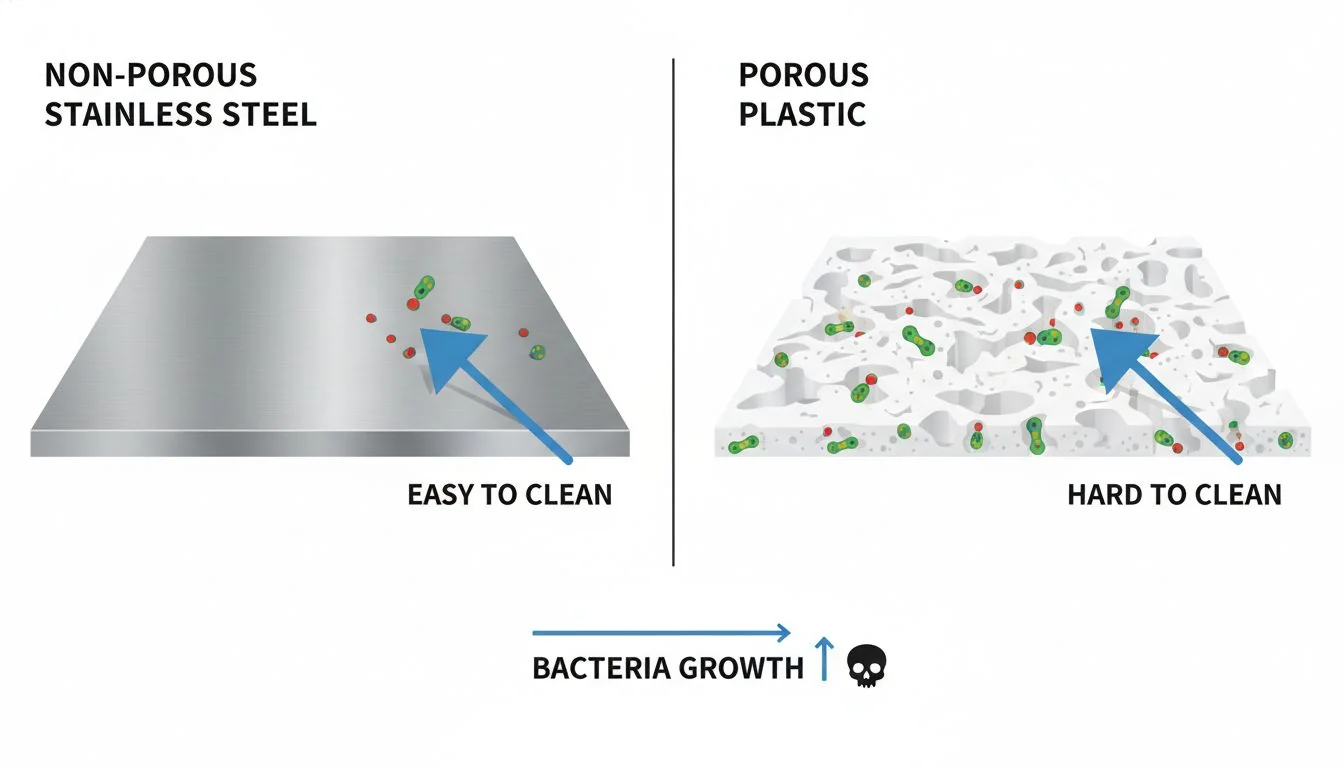
For years, the benchmark for a "safe" plastic product was the "BPA-Free" label. Today, that's not enough. Customers are smarter. They know that "BPA-Free" doesn't mean "chemical-free" or "bacteria-free." The conversation has shifted. True safety in a wellness product means hygiene. This is where stainless steel changes the game. I've always told my design clients that material choice is the foundation of a product's promise. For a humidifier, the promise is clean, healthy air.
The Non-Porous Advantage
The single most important property of stainless steel is that it's non-porous.
- No Place to Hide: Bacteria, mold, and slime have nowhere to anchor and grow. The surface is incredibly smooth and free of the microscopic pits and valleys found in plastic.
- Easy to Sanitize: This is why stainless steel is the required material for surgical instruments, commercial kitchens, and food processing plants. It can be cleaned and sanitized to a much higher standard than plastic.
When you make a humidifier from stainless steel, you are moving from a material that promotes bacterial growth to one that resists it. You are not just making a minor improvement; you are fundamentally changing the product's performance and safety profile.
BPA-free plastics do not leach any chemicals into water.False
While free of Bisphenol-A, many 'BPA-free' plastics use other chemical plasticizers, like BPS or BPF, which are structurally similar and may also have hormone-disrupting effects. Their long-term safety is still under study.
304-grade stainless steel is considered food-grade and is one of the most common materials used in kitchen appliances and cookware.True
Its composition, typically 18% chromium and 8% nickel, provides excellent corrosion resistance and durability, making it safe for contact with food and water.
3. "Sustainable" — Ending the Cycle of Disposable Wellness?
Customers are tired of cheap plastic junk that breaks after one season. This "disposable wellness" trend hurts your brand's credibility and the planet. You can offer a "buy for life" alternative.
True sustainability is not just about using "eco-friendly" materials; it is about durability and longevity. A stainless steel humidifier is built to last for years, ending the wasteful cycle of buying and discarding cheap plastic units.
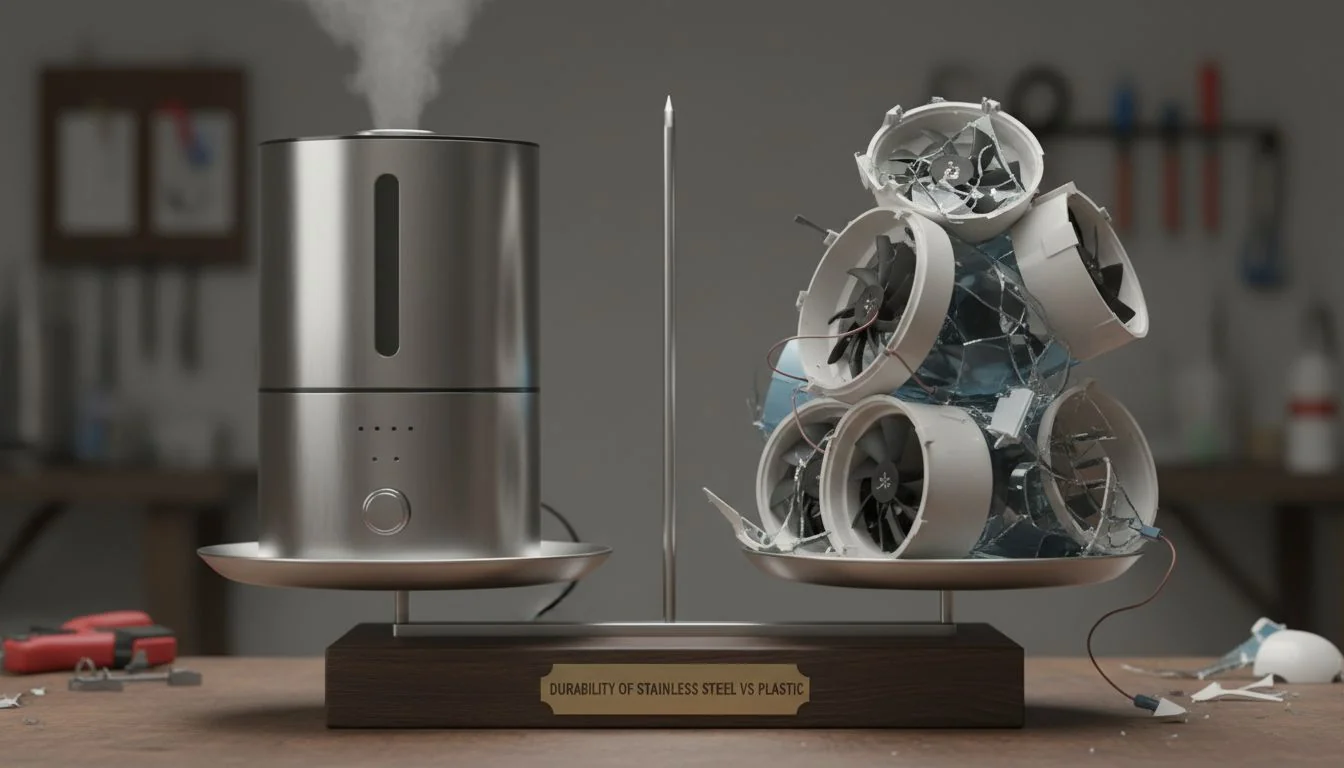
The word "sustainable" gets thrown around a lot. Most brands use it to talk about recycled materials or eco-friendly packaging. But that misses the bigger picture. What is the most sustainable practice? To stop throwing things away. I've seen the mountains of discarded plastic molds and products in my career. The most impactful thing we can do as designers and manufacturers is to create products that last. This is how you redefine sustainability for a premium, conscious buyer.
Durability as a Feature
Instead of a product that lasts one or two winters, you can offer one that lasts a decade.
- Buy It For Life: A stainless steel humidifier is an investment, not a disposable item. This appeals to a growing market of consumers who are rejecting throwaway culture and are willing to pay more for quality and longevity.
- Reduced Landfill Waste: Imagine one stainless steel humidifier versus the five or ten cheap plastic ones it replaces over its lifetime. The environmental impact is drastically lower.
This isn't just about being green. It's a powerful business strategy. You shift the conversation from "how cheap is it?" to "how long will it last?". This is a conversation that plastic products will always lose.
| 측면 | Disposable Plastic Model | Durable Stainless Steel Model |
|---|---|---|
| 수명 | 1-2 years | 10+ years |
| Customer Mindset | "It's cheap, I'll replace it." | "It's an investment in health." |
| Long-Term Cost | High (Repurchasing every 1-2 years) | Low (One-time purchase) |
| Brand Perception | Disposable, Low-Quality | Premium, Trustworthy, Sustainable |
Manufacturing stainless steel has a smaller carbon footprint than manufacturing plastic.False
Producing steel is an energy-intensive process and generally has a higher initial carbon footprint than producing plastic. However, steel's durability and high recyclability can make its overall lifecycle impact lower than that of disposable plastic products that are repeatedly manufactured and discarded.
Stainless steel is one of the most recycled materials on earth, with a recovery rate of over 90%.True
Steel can be recycled repeatedly without any loss of its properties. This makes it a key component of the circular economy, reducing the need for virgin resources.
Your brand is getting lost in a sea of similar-looking plastic products. You struggle to justify a premium price point. The solution is to use a superior material as your core brand story.
"Hygienic" is the ultimate differentiator because it solves the customer's biggest and most emotional pain point. It allows a brand to justify a high price, earn 5-star reviews, and build a reputation for health and quality that plastic competitors simply cannot copy.

I've worked with dozens of D2C founders. The ones who succeed are not the ones who try to be the cheapest. They are the ones who create real, tangible value that customers can see and feel. For a humidifier, the most powerful value you can offer is the promise of a clean, healthy, and hassle-free experience. This is where your material choice becomes your best marketing tool. By leading with "hygienic," you are not just selling a feature; you are selling peace of mind.
The Business Case for Stainless Steel
Choosing stainless steel is a strategic business decision that pays off in three key ways:
- Justify a Premium Price: Customers will not pay $150 for a plastic humidifier that feels just like a $40 one. But they will pay a premium for a product made from solid, medical-grade steel that solves the slime problem forever. The material itself communicates value.
- Win 5-Star Reviews: What is the #1 reason for 1-star reviews on humidifiers? Mold, slime, and cleaning difficulty. By eliminating this problem, you pave the way for glowing 5-star reviews that talk about quality, ease of use, and health. These reviews are your most powerful sales engine.
- Protect Your Brand: The last thing you want is for your brand to be associated with "mold" or "sickness." A product that harbors bacteria is a massive liability. Stainless steel is brand insurance. It protects your reputation and shows your customers that you prioritize their health above all else.
A product's material has little impact on its perceived value if the design is good.False
Material is a fundamental component of perceived value. A heavy, cool-to-the-touch steel product is perceived as more premium and durable than a lightweight plastic one, even with an identical design.
Products with higher average star ratings can see a significant increase in conversion rates.True
Numerous studies show a direct correlation between higher review scores and sales. Moving from a 3-star to a 5-star average rating can increase conversion rates by 25% or more, as it builds trust and social proof.
5. What Should You Ask Your "Stainless Steel" Manufacturing Partner?
You have decided to use stainless steel. Great. But not all suppliers are the same. Choosing the wrong Manufacturing partner7 can lead to a failed product and wasted investment.
To ensure you get a high-quality product, ask your partner if the entire water path is stainless steel. Verify the material grade (304 or 316). Most importantly, confirm they hold key safety and compliance certifications like ETL, CARB, and EPA.
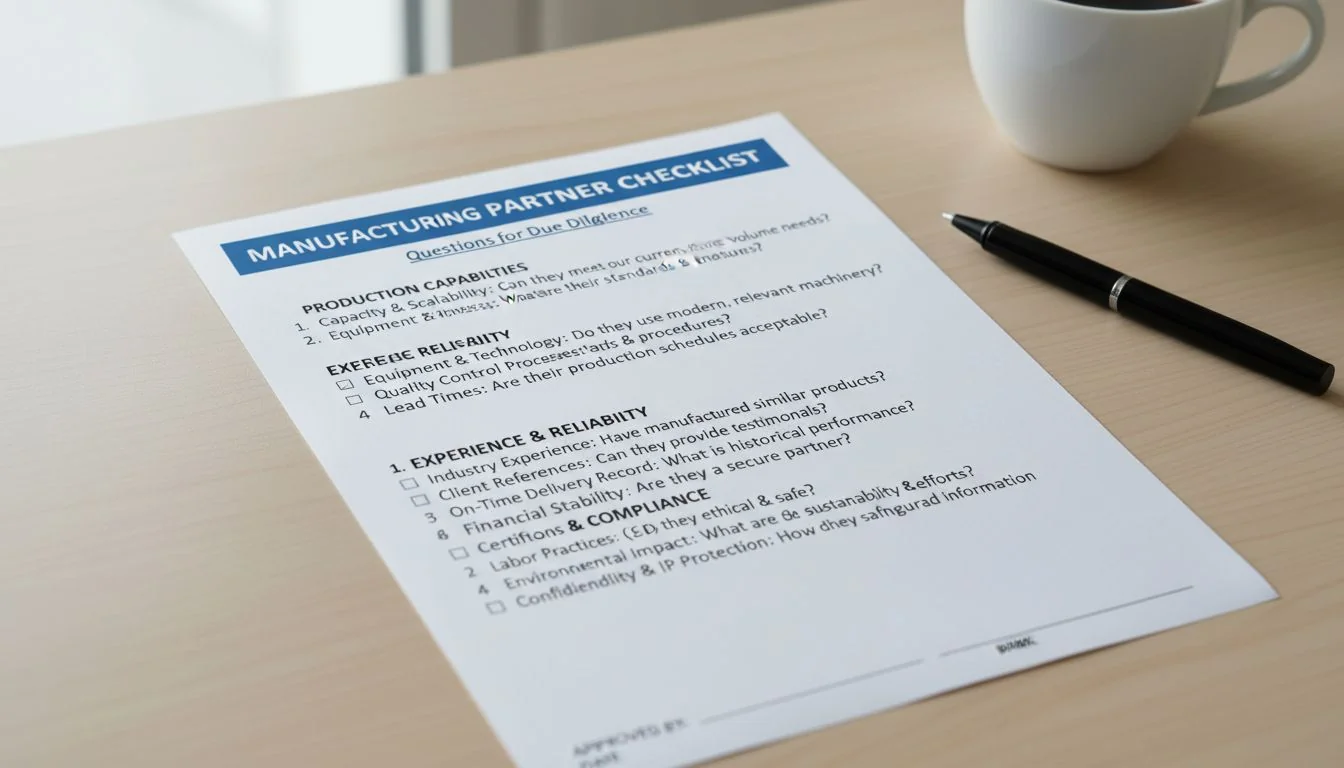
This part is critical. As someone who has run a trading company connecting clients with factories, I know that the details matter. A manufacturer might say they make "stainless steel humidifiers," but the reality can be very different. You need to act as a detective and ask the right questions. These questions will filter out the low-quality suppliers and help you find a true partner who can deliver a premium product.
The "Hisoair Filter": 4 Questions to Ask
Think of this as your buyer's guide. A top-tier partner will be able to answer "Yes" to all of these.
- Is the entire water path made of stainless steel?
Some manufacturers cut corners. They use a steel tank but keep the internal tubing and atomizer components plastic. This completely defeats the purpose, as slime will just grow on the internal plastic parts. Demand 100% steel construction for all water-contact surfaces. - What grade of stainless steel do you use?
Ask for specifics. 304 stainless steel is the standard for food-grade applications and is excellent. 316 stainless steel offers even better corrosion resistance and is considered medical-grade. If a supplier can't tell you the grade, that's a major red flag. - Can you provide your ETL, CARB, and EPA certifications?
These are non-negotiable for the North American market. ETL proves the product is electrically safe. CARB (California Air Resources Board) certification is required for many air appliances sold in California. EPA registration is necessary if you make any antimicrobial claims about your product's ability to resist mold or bacteria. - What is your experience with deep-drawing steel?
Making a complex shape like a humidifier tank from a sheet of steel requires a process called deep drawing. It's a specialized skill. Ask to see examples of their previous work. This is very different from plastic injection molding, and your partner must have proven expertise.
All stainless steel is magnetic.False
It depends on the grade and structure. Austenitic stainless steels, like the common 304 and 316 grades, are non-magnetic. Ferritic and martensitic stainless steels are magnetic.
An EPA Establishment Number is required for any facility that produces 'pesticidal devices,' which can include humidifiers marketed with antimicrobial properties.True
Under FIFRA (Federal Insecticide, Fungicide, and Rodenticide Act), if a product is claimed to kill or repel pests (including microbes like mold and bacteria), the device itself and the facility that produces it must be registered with the EPA.
6. Why Should You Stop Selling Plastic and Start Leading with Health?
You are still thinking about that plastic design because it seems cheaper and easier. But this means you are knowingly choosing to sell a product with a major, known flaw. It is time to lead the market.
Stop selling disposable plastic and start leading with health. By choosing stainless steel, you are not just choosing a material. You are choosing to build a better product, a stronger brand, and a more loyal customer base that trusts you.

The choice you make as a product designer or brand leader defines your future. You can continue to compete in the crowded, low-margin market of disposable plastic goods, dealing with constant complaints and returns. Or, you can elevate your brand and lead a new category of wellness products that are built on a foundation of health, quality, and trust. From my experience, the brands that win in the long run are the ones that solve real problems for their customers.
The Future is Durable and Hygienic
The market is shifting. Consumers are more educated and demanding than ever before. They are looking for brands that align with their values of health and sustainability.
- Solve the Real Problem: Don't just put a new shell on an old, flawed technology. Address the core issue of hygiene.
- Build a Moat: A unique design can be copied. A low price can be beaten. But a commitment to quality, demonstrated through a superior material like stainless steel, builds a competitive advantage that is very difficult to replicate.
- Choose to Lead: The future of home wellness is not plastic. It is in durable, safe, and truly hygienic materials. This is your opportunity to be a leader, not a follower. The choice you make today will determine where your brand stands tomorrow.
The global market for 'sustainable goods' is shrinking as consumers prioritize low prices.False
The market for sustainable products is growing rapidly. A 2021 study by NYU Stern's Center for Sustainable Business found that sustainability-marketed products were responsible for more than half of the growth in consumer packaged goods from 2015 to 2021.
Product returns cost retailers hundreds of billions of dollars annually.True
According to the National Retail Federation (NRF), retailers incurred over $743 billion in returns in 2023. A significant portion of these returns are due to product quality and performance issues.
결론
Choosing stainless steel is a strategic business decision. It builds a premium, trustworthy brand by prioritizing customer health, product durability, and long-term value over short-term cost savings.
References
-
Learn about the bacteria behind pink slime and effective prevention methods for humidifiers. ↩
-
Explore how stainless steel enhances hygiene and durability in humidifiers, making them a superior choice. ↩
-
Learn why selecting the right materials is essential for product performance and customer satisfaction. ↩
-
Discover the science behind stainless steel's bacteria resistance and its implications for health. ↩
-
Understand the significance of durability in humidifiers and how it affects long-term use and sustainability. ↩
-
Investigate the shift towards hygiene-focused product design and its impact on consumer choices. ↩
-
Find out the key criteria for selecting a reliable manufacturing partner for stainless steel products. ↩



